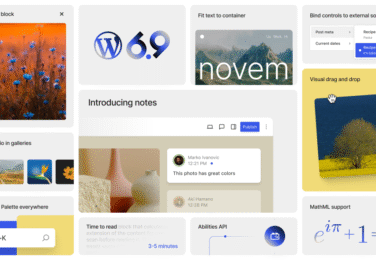Shopify SEO for 2025: How to Rank Higher in Google Shopping

Table of Content
What if most of your potential customers are actively searching for your products right now, but your online store remains invisible to them?
Google processes a staggering 16.4 billion searches every single day. In this crowded digital marketplace, your store’s position on the search engine results page is everything. The top result captures over a quarter of all clicks.
Search contributes to nearly 70% of all trackable website traffic. This makes optimising your store for visibility an essential investment, not just an optional marketing tactic. We’ll show you how to stand out.
This guide focuses on the unique challenges and opportunities for Shopify SEO. We break down complex principles into actionable steps you can implement, even without deep technical knowledge.
Our approach combines expert knowledge with supportive guidance. We help you build a foundation that consistently attracts qualified buyers through search results.
Key Takeaways
- Your position in search results directly impacts your store’s traffic and sales.
- Search engines are the primary source of trackable traffic for most online businesses.
- Optimising a Shopify store requires specific strategies different from a general website.
- Achieving better rankings is a systematic process that yields significant results over time.
- This guide provides a clear roadmap to transform your store into a search magnet.
Understanding the Future of Shopify SEO in 2025
Artificial intelligence is revolutionising how search engines rank websites, making traditional optimisation methods less effective. We need to understand these changes to maintain strong visibility.
The Evolving Landscape of Search Engine Algorithms
Modern algorithms have moved beyond simple keyword matching. They now evaluate content quality, user experience, and contextual relevance simultaneously.
Machine learning systems analyse hundreds of factors at once. They consider everything from page speed to engagement signals when determining rankings.
The Growing Role of AI in SEO Strategies
AI tools can identify optimisation opportunities by comparing your content to top competitors. They provide data-driven recommendations that save hours of manual work.
Google accepts AI-assisted content but rejects purely AI-generated material designed to manipulate rankings. Ethical use of these tools maintains compliance with search engine guidelines.
Preparing Your Shopify Store for SEO Success
Many store owners overlook the preliminary steps that make all subsequent optimisation efforts effective. We focus on building a strong foundation first. This ensures your tracking systems capture accurate data from day one.
Proper tool configuration transforms guesswork into data-driven decisions. We guide you through each essential setup process. These free tools provide invaluable insights into your store’s performance.
Setting Up Essential Tools and Analytics
Begin with Google Search Console to monitor organic traffic and identify indexing issues. This free tool reveals how Google views your pages. It alerts you to technical problems affecting visibility.
Google Analytics tracks visitor behaviour and conversion rates. Understanding traffic sources helps prioritise marketing efforts. Segment data to see which channels deliver the best results.
Don’t ignore Bing Webmaster Tools. Bing captures significant Australian search volume. Proper setup ensures you don’t miss potential customers.
| Tool | Primary Purpose | Setup Priority |
|---|---|---|
| Google Search Console | Monitor search performance | Essential |
| Google Analytics | Track user behaviour | Essential |
| Bing Webmaster Tools | Bing search visibility | High |
| Custom Domain | Brand building | Critical |
A custom domain strengthens brand identity and search presence. Avoid limitations of myshopify.com subdomains. Choose a memorable name relevant to your products.
Google Merchant Center connects your products to shopping results. The Google & YouTube app automatically syncs your catalogue. This maintains accurate inventory across all channels.
Verification steps confirm each tool works correctly. We provide specific checks to prevent data gaps. Proper setup creates the infrastructure for informed optimisation decisions.
Essential On-Page SEO Optimisations
Your store’s ability to attract qualified traffic depends heavily on how well you structure and present your pages. These visible elements create the first impression for both search engines and human visitors.
https://www.youtube.com/watch?v=J71drztNX8o
We focus on the fundamental components that directly influence how your content ranks and converts. Proper implementation makes your pages more appealing and understandable.
Optimising Heading Tags and Content Structure
Heading tags create a clear hierarchy that guides both visitors and search algorithms. Your H1 tag serves as the main headline, containing your primary keywords.
Include only one H1 per page to maintain focus. Subheadings (H2, H3) break content into scannable sections that improve readability.
| Heading Level | Purpose | Best Practice |
|---|---|---|
| H1 | Main page title | One per page, keyword-rich |
| H2 | Major sections | Support H1 topic |
| H3 | Subsections | Detail specific points |
| H4 | Further breakdown | Rarely needed |
Crafting Effective Title Tags and Meta Descriptions
Title tags appear as blue links in search results, making them critical for click-through rates. Keep them between 40-60 characters for optimal visibility.
Meta descriptions should clearly summarise page content in under 160 characters. They convince searchers to choose your listing over competitors.
Our step guide approach ensures you implement these techniques correctly. Proper keyword research informs where to place terms for maximum impact.
Implementing Shopify SEO Strategies
Strategic integration with Google Merchant Center transforms how your products appear across various Google surfaces, from shopping tabs to image searches. This creates multiple discovery pathways beyond traditional organic results.
We focus on coordinating these efforts to maximise your visibility. A holistic approach ensures all elements work together effectively.
Maximising Organic Traffic and Google Shopping Visibility
Proper Google Merchant Center configuration drives qualified traffic through shopping results. Products appear in multiple Google channels simultaneously.
Optimise your product titles by including brand names and key attributes. This helps shoppers find exactly what they need.
High-quality images are essential for maximum click-through rates. Follow specific requirements for optimal performance.
| Aspect | Requirement | Benefit |
|---|---|---|
| Product Images | 800×800 pixels minimum | Clear product display |
| Product Titles | Brand + Type + Attributes | Better search matching |
| Data Consistency | Match website information | Avoid disapprovals |
| Shipping Options | Consistent with website | Customer trust |
Your keyword research should inform both organic and shopping strategies. Use terminology that matches actual search queries.
Maintain consistency between your online store and shopping feeds. Discrepancies can reduce visibility across Google’s surfaces.
This coordinated approach improves search engine rankings through multiple channels. It creates powerful synergies that compound over time.
Technical SEO: Enhancing Site Performance
Ensuring your ecommerce website is technically sound is the first step to securing a strong presence in search results. We simplify the essential configurations that boost your site’s performance.
Your platform automatically generates a sitemap. This file lists all your important pages for a search engine to discover. You can find it at yourdomain.com/sitemap.xml.
Submitting this sitemap to Google Search Console and Bing Webmaster Tools is a critical task. It guides crawlers to index your content efficiently.
Sitemap Submission and Efficient Indexing
After submission, verify your site is indexed. Use the search command “site:yourdomain.com”. If pages appear, indexing is successful.
This process can take a week or more. Be patient as the search engine works through your sitemap.
Mobile Responsiveness and Site Speed Improvements
Every modern theme is mobile-friendly by default. This is crucial as Google prioritises sites that work well on all devices.
Site speed is a direct ranking factor. Fast-loading pages provide a better user experience. This aligns with the goals of any ecommerce website.
Your store benefits from a built-in Content Delivery Network (CDN). It automatically serves optimised images for faster loading times.
To further improve performance, minimise heavy apps and choose lightweight themes. This technical foundation supports all your other optimisation efforts.
Optimising Metadata and URL Structure
Optimising your page addresses and summary descriptions creates a powerful first impression that influences both discoverability and click-through rates. We focus on making these elements work harmoniously to guide visitors while signalling relevance to algorithms.

Crafting Click-Worthy Metadata
Your URL structure should clearly communicate page content using target keywords. Keep addresses concise and readable by removing filler words and using hyphens between terms.
Avoid changing URLs that already generate traffic. If updates are necessary, ensure proper redirects are in place. The platform typically handles this automatically.
Customise title tags and meta descriptions beyond automatic population. Titles under 60 characters and descriptions under 160 characters prevent truncation in search results.
This optimisation serves dual purposes on your product pages. It signals relevance to algorithms while marketing effectively to potential customers scanning search engine results.
Creating Compelling Content and Product Pages
The most successful ecommerce business models recognise that content marketing extends far beyond simple product descriptions. We focus on creating value that resonates with your specific audience while driving measurable results.
Developing a Robust Content Marketing Strategy
Begin by identifying where your audience seeks information. Platforms like TikTok, Instagram, and Reddit offer valuable insights into customer questions. Match these queries with actual search terms using research tools.
For entrepreneurs wanting to find ideawhat print products have demand, we help you find ideahow make informed decisions. Those exploring how dropshipping work benefit from strategic content planning.
Format your content for maximum readability. Use clear subheadings, bullet points, and multimedia elements. This approach helps customers understand ideahow make sell your products effectively.
Writing Unique Product Descriptions
Avoid using manufacturer descriptions verbatim. Custom content prevents duplicate issues while strengthening your brand voice. This is crucial for any online store aiming to stand out.
Your product pages should serve multiple purposes. They must satisfy search requirements while persuading visitors to purchase. Include comprehensive information that reduces customer inquiries.
For merchandise sellers learning make sell merch that sell merch fans will merch fans love, we provide specific guidance. This includes strategies for print demand start businesses wanting to find ideawhat print demand opportunities.
Leveraging Keyword Research and Search Intent
Effective keyword discovery transforms guesswork into targeted strategies that connect your offerings with genuine demand. We help you understand exactly what terms your potential customers use when searching for products like yours.
Professional tools like Moz, Ahrefs, and Semrush reveal valuable insights about search behavior. These platforms show monthly search volumes and competition levels for specific terms.
Effective Tools and Techniques for Keyword Discovery
When evaluating keywords, focus on three critical factors. Search volume indicates popularity, while difficulty scores show competition intensity. Commercial viability ensures terms match your actual products.
Analysing competitors’ rankings uncovers valuable opportunities. Enter their URLs into research tools to see which search terms drive their traffic. This reveals gaps where you can compete effectively.
| Keyword Type | Search Intent | Typical Volume | Content Strategy |
|---|---|---|---|
| Informational | Answer questions | High | Blog posts, guides |
| Transactional | Ready to buy | Medium | Product pages |
| Navigational | Find specific brand | Low | Brand pages |
| Commercial | Research products | Medium-High | Comparison content |
Understanding search intent is crucial for matching content to customer needs. Study top-ranking pages to see how they answer specific queries. This alignment significantly improves your visibility in search results.
Long-tail keywords often indicate higher purchase intent with less competition. These detailed phrases help you target customers further along their buying journey. Proper keyword research ensures your content meets genuine customer needs.
Strategic Internal Linking and Navigation>
Your website’s navigation system acts as both a roadmap for visitors and a voting mechanism for search algorithms. We help you build connections that guide customers while signalling content importance to search engines.
Each internal link serves as a vote of confidence for the destination page. This system helps search engines understand your content hierarchy and topical authority.
Building a Clear and Logical Menu Structure
Your global navigation communicates which pages matter most. We recommend featuring your most important collection pages prominently.
Organise menu categories by popularity to create intuitive pathways. This approach reduces customer friction while improving crawlability.
Ensure every page is accessible within a few clicks from your homepage. Orphaned pages remain invisible to both users and search crawlers.
Diversify your anchor text strategy using exact match keywords, partial matches, and descriptive phrases. This communicates context effectively to search engines.
Whether using single-bar, double-bar, or dropdown navigation formats, maintain logical organisation. Each link should serve both user experience and search visibility purposes.
Utilising AI and Automation in SEO
Artificial intelligence now provides powerful assistance for store owners seeking to enhance their visibility across search platforms. These tools leverage machine learning to analyse your content against top-performing competitors.
We help you understand how to use these technologies effectively while maintaining quality standards that search engines reward.
Exploring AI Tools for Content Creation
AI can dramatically accelerate keyword research by generating relevant suggestions with strategic explanations. These tools also summarise extensive research into concise bullet points, saving valuable time.
Google accepts AI-assisted content but rejects purely generated material designed to manipulate rankings. We emphasise using AI for research and first drafts rather than complete content creation.
This approach maintains human expertise while leveraging AI’s efficiency for time-consuming tasks.
Integrating Shopify Magic for Enhanced Customisation
Shopify Magic is the integrated AI assistant specifically trained for commerce contexts. It supports product image editing, description drafting, and FAQ generation directly within your store interface.
Unlike generic AI tools, Shopify Magic understands ecommerce-specific needs. It’s included free with all plans, making sophisticated assistance accessible to businesses of all sizes.
We recommend using AI as an augmentation tool rather than replacement. Your strategic direction and quality control remain essential for effective shopify seo outcomes.
Media Optimisation and Image Alt Text
Visual elements often become the silent salespeople of your online presence, directly influencing both customer decisions and search engine rankings. We focus on balancing visual quality with technical performance to maximise impact.
Compressing Images for Faster Load Times
Large image files slow down your pages, affecting user experience and visibility. Your platform automatically compresses images using WebP format, reducing file sizes by over 30% compared to JPEG or PNG.
This advanced compression maintains quality while speeding up load times. Upload images at their intended display size to avoid unnecessary resizing.
Descriptive file names and alt text help search engines understand your visual content. Instead of “IMG_1234.jpg,” use names like “blue-running-shoes.jpg.”
Alt text serves dual purposes: describing images for accessibility and providing context for indexing. This media optimisation how make approach improves both technical performance and customer engagement.
Include images in your sitemap to enhance visibility in image search results. Your store automatically handles this for primary product images, creating additional discovery pathways.
Customising Your Shopify Store – Developer Tips and Contact Options
When your online store needs custom features that standard settings can’t provide, professional developer assistance becomes essential. We help you identify when technical modifications require expert intervention versus what you can safely handle yourself.

Schema markup structures your data so search engines display rich information directly in results. This can show ratings, prices, and availability, increasing click-through rates significantly.
When to Seek Developer Assistance
Recognising the right time to seek help prevents costly mistakes. Attempting complex technical work without proper skills can harm your ecommerce business through broken functionality or security issues.
Structured data implementation often requires developer expertise, especially with custom themes. While basic schema generates automatically, advanced markup needs manual coding.
| Scenario | DIY Risk Level | Developer Benefit |
|---|---|---|
| Custom checkout modifications | High | Secure, optimised implementation |
| Advanced app integrations | Medium-High | Seamless functionality |
| Schema markup enhancements | Medium | Rich snippet eligibility |
| Theme customisations | Variable | Professional appearance |
Businesses looking to start ecommerce business ventures often encounter technical limitations during growth phases. Professional support delivers better returns than hours of DIY troubleshooting.
How to Contact for Customisation Help
If you’re struggling with technical implementations, our team provides expert assistance. Contact us at hello@defyn.com.au for support with complex store customisations.
We help Australian businesses navigate technical challenges effectively. This allows you to focus on growth while we handle the complexities.
Boosting Local and International Search Rankings in Australia
Australian businesses face a unique opportunity to connect with local customers through strategic content localisation that resonates with domestic search behaviours. We help you build an online store that feels authentically Australian while maintaining global appeal.
This approach becomes increasingly vital as we approach store 2025 objectives. Search algorithms now prioritise locally relevant results for queries with geographic intent.
Optimising Content for the Australian Market
Begin by adopting Australian English spelling conventions throughout your content. Use ‘colour’ instead of ‘color’ and ‘centre’ rather than ‘center’. These subtle changes signal local relevance to both customers and algorithms.
Incorporate terminology that resonates with Australian shoppers. Reference local landmarks, seasonal events, and cultural touchpoints that create genuine connection.
Your online store 2025 strategy should align with Southern Hemisphere timing. Feature summer products during December-February and winter items in June-August.
We help balance local optimisation with international appeal if you ship overseas. This ensures you don’t inadvertently limit visibility in markets you actively serve.
Technical considerations include selecting appropriate domain extensions. A .com.au domain strongly signals Australian focus, while .com maintains global flexibility.
Configure currency settings to Australian dollars and ensure shipping options reflect local logistics realities. Consistency across your website and business profiles strengthens location signals.
Australian businesses can leverage local knowledge against international competitors. Emphasise faster shipping, local customer service, and community involvement to win customers.
As search engines evolve, localised content becomes essential rather than optional. This strategic approach significantly improves your search engine rankings for Australian customers.
Conclusion
Transforming your store’s search performance demands ongoing attention to both foundational and advanced techniques. We’ve equipped you with a comprehensive framework that works whether you’re learning starting uphow to start online store ventures or optimising established operations.
Remember that visibility growth compounds over time. Consistent application of these strategies will strengthen your positions throughout 2025. This approach helps you make money through multiple channels including exploring make money instagram opportunities.
View optimisation as an ongoing journey rather than a one-time task. Regular monitoring with tools like Google Search Console ensures you maintain competitive advantage. These skills provide lasting foundations regardless of algorithm changes.
Breaking the process into manageable steps makes success achievable for all businesses. Whether you’re researching online10 best ecommerce practices or determining sell online10 best approaches, our team at hello@defyn.com.au supports your customisation needs.
You now possess the knowledge to significantly improve your digital presence. We’re here to help whenever you need expert guidance on your path to greater visibility and revenue.










